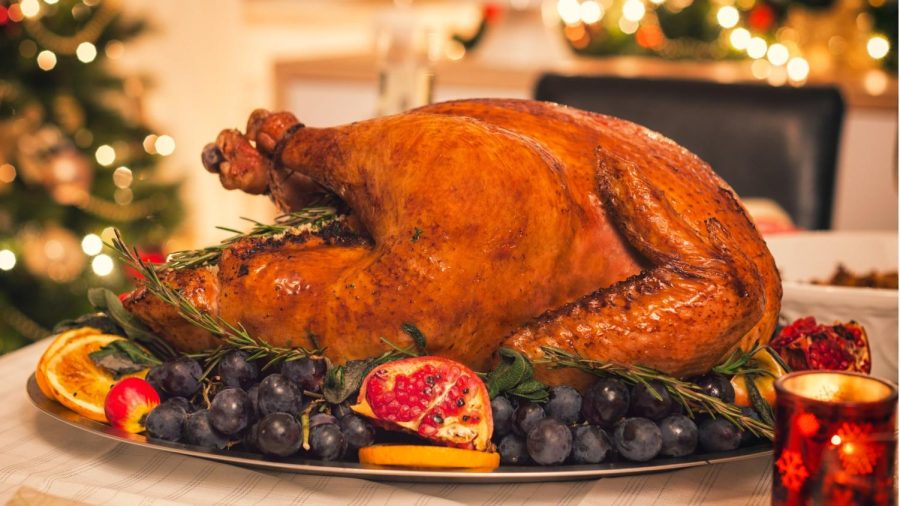Turkey? More Like Bad
As November progresses and Thanksgiving approaches, perhaps families are beginning to discuss their Thanksgiving plans. Maybe dinners are being organized, dishes planned, and at the center of all of this, is a traditional food that society has been deluded into including as a staple for Thanksgiving- the Turkey.
The turkey is a relatively large-sized bird native to the Americas. They are omnivores, eating a diet consisting of grasses and small children, can grow up to 5 ft. tall and run at impressive speeds. The roast turkey is a traditional meal eaten during Thanksgiving, although the origins of the tradition are unclear. Contrary to popular belief, there is little evidence that turkey was eaten at the “first Thanksgiving” held between the pilgrims and the Wampanoag people in 1621. But, due to the abundance of the bird in the wild and its efficiency at feeding a large number of people, it became a popular option in early American celebrations of holidays and festivals, leading to its place today as a hallmark Thanksgiving food.
However, we have let ourselves become blinded by tradition, chained down by customs and the result is lying to ourselves that turkey is actually good. By nature, turkey is rather terrible. The meat has a texture reminiscent of sandpaper and is so dry that it actively siphons the moisture out of your mouth yet the skin remains soggy and pallid, not unlike that of a decaying cadaver. Although some claim that a vigorous regime of brining, slow-cooking, and witchcraft performed over the course of several weeks may make the turkey slightly more palatable, the fact remains it is inherently inferior to practically all other foods and is utterly not worth the effort.
Especially this year, with outbreaks of avian flu driving up prices, buying a turkey is more of a scam than ever. According to Fox 5 New York, “The price per pound of an 8- to 16-pound turkey has risen to $1.99, a 73% increase from $1.15 last year….” Meanwhile, individual cuts of turkey are also seeing drastic price increases. “The retail price for fresh boneless, skinless turkey breast reached a record high of $6.70 per pound in September” (American Farm Bureau Federation).
Let us shed our social obligations and ban this dry, coarse bird from Thanksgiving. Let us remove this dreadful fowl from the dinner table, in favor of its more successful cousin, Harvard graduate and accomplished doctor- the chicken. Chicken is simply superior taste-wise, consistently good, priced similarly, easier to prepare and overall a very solid option for any occasion. But perhaps one may argue that by replacing the turkey, we lose a fundamental part of the tradition of Thanksgiving, and consequently, a crucial part of the ‘murican spirit. Worry not. I have pondered long and hard and have come up with a few suggestions for alternative, all-American meats for the more traditionally inclined. A fresh beaver, grizzly bear, or alligator, obtained with your own hands, sheer willpower, grit and AR-15, are all viable options, however, if we’re going to stay in the realm of poultry, one may also opt for a bald eagle. Although they may be a bit lacking in size compared to a turkey, they are equally as ferocious and cause a similar rate of child mortality each year.
And what do other North students think about turkey? “Turkey is good. Because it’s meat,” says junior Daisy Garcia. Junior Imelie Brosas doesn’t seem to feel strongly about one side or the other: “Turkey is not good or bad. It’s just neutral.” Unfortunately, neither seemed to be all too thrilled about the aforementioned proposal of replacing the turkey with an entire grilled bear.
Bear loss, I suppose.






